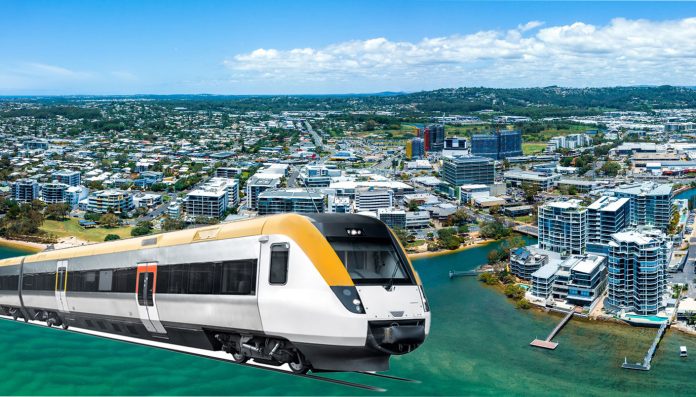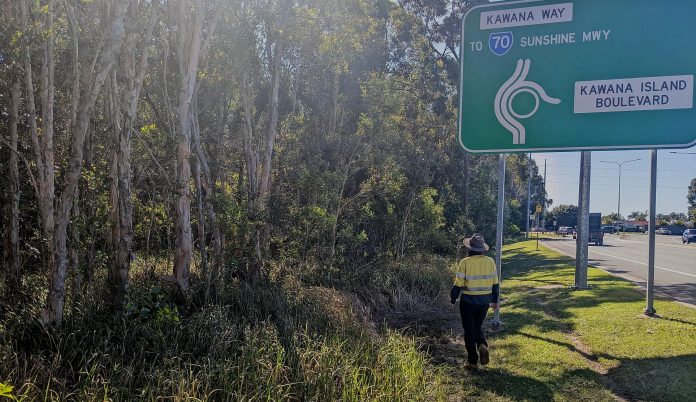The first on-the-ground activity in a long time is happening along the proposed railway route that could one day link the hinterland to the Sunshine Coast’s beaches.
Environmental surveys — identifying plants, animals and water sources — are being undertaken in coming weeks on the land preserved for the rail corridor.
The project, formerly known as the Caboolture to Maroochydore Corridor Study (CAMCOS), is now being called the Direct Sunshine Coast Line.
It would expand the South East Queensland rail network through the proposed spur line between Beerwah and the Sunshine Coast beach towns, including Caloundra, Kawana and Maroochydore.
This spur would provide access and connectivity between the hinterland and coastal communities, and to the broader SEQ rail network, with opportunities for new stations, park ‘n’ rides and active transport facilities to be explored.

The project previously known as CAMCOS has not progressed since 1999, but in December the State Government announced it would be re-examined in 2022 because of the 2032 Olympics and population growth.
CAMCOS was envisioned as a heavy rail line from Brisbane, branching east at Beerwah and taking passengers directly to coastal suburbs at Caloundra and Maroochydore.
A preliminary evaluation of the project is underway which will review the existing preserved corridor and consider refinements to the alignment, station locations and potential staging plans to meet passenger demand and land use in the region.
As part of the planning, a series of environmental surveys will be undertaken on selected properties, most of which are government owned, in the preserved corridor in the coming weeks.
The surveys are aimed better understanding the broader ecosystem and environmental factors including identifying plants and animals, water sources and native and endangered species.
The State Government said the early survey work was critical so that potential environmental impacts from the rail extension were identified and could be minimised through the planning process.
The $6 million planning project for the Direct Sunshine Coast Line is jointly funded by the Australian and Queensland governments, each contributing $3 million.

CAMCOS, which stands for Caboolture to Maroochydore Corridor Study, has been talked about since 1999, but no significant progress has been made in the decades since, other than:
- Identifying the proposed corridor
- Buying and securing land along the proposed corridor
- Upgrading and duplicating the line between Caboolture and Beerburrum
The Beattie Government claimed in 2007 that the first stage of CAMCOS to Caloundra would be open by 2015, followed by the second stage to Maroochydore by 2020.
It estimated the cost of the project back then to be $1 billion. Now it could be as high as $3 billion.
A Beerwah to Maroochydore passenger line has been championed for more than six years by local Federal Member for Fairfax, Ted O’Brien, and Federal Member for Fisher, Andrew Wallace.
Recently, a consortium led by Mr O’Brien tried to push an alternative proposal for fast rail, dubbed North Coast Connect, which would use the same CAMCOS corridor.
However, that $5.3 billion bid was not accepted for funding by Infrastructure Australia because it lacked a proponent i.e. the State Government, and was economically unviable.
Transport and Main Roads minister Mark Bailey said the State Government was “doing the groundwork” so it could make informed decisions on the project.
“The outcomes of this planning phase will put the Direct Sunshine Coast Line project in good stead for future delivery,” said Mr Bailey.
State Member for Nicklin Rob Skelton said the survey work would help understand changes to the landscape since initial planning for the project was completed more than 20 years ago.
“It will also provide opportunities to commence the important process of obtaining environmental approvals and assessments, which may enable acceleration of a future business case for the project.”
For more information about the project, visit www.tmr.qld.gov.au and search ‘Beerwah to Maroochydore Rail extension’.





